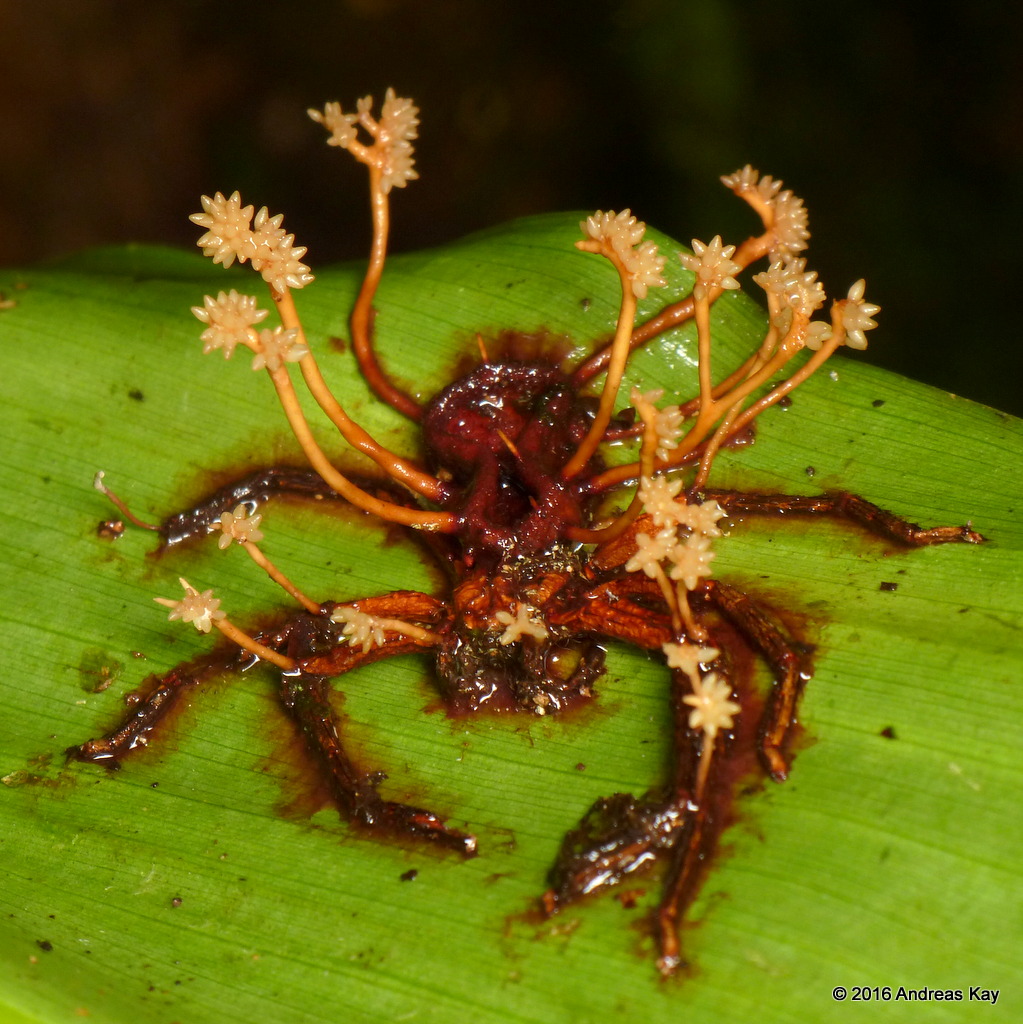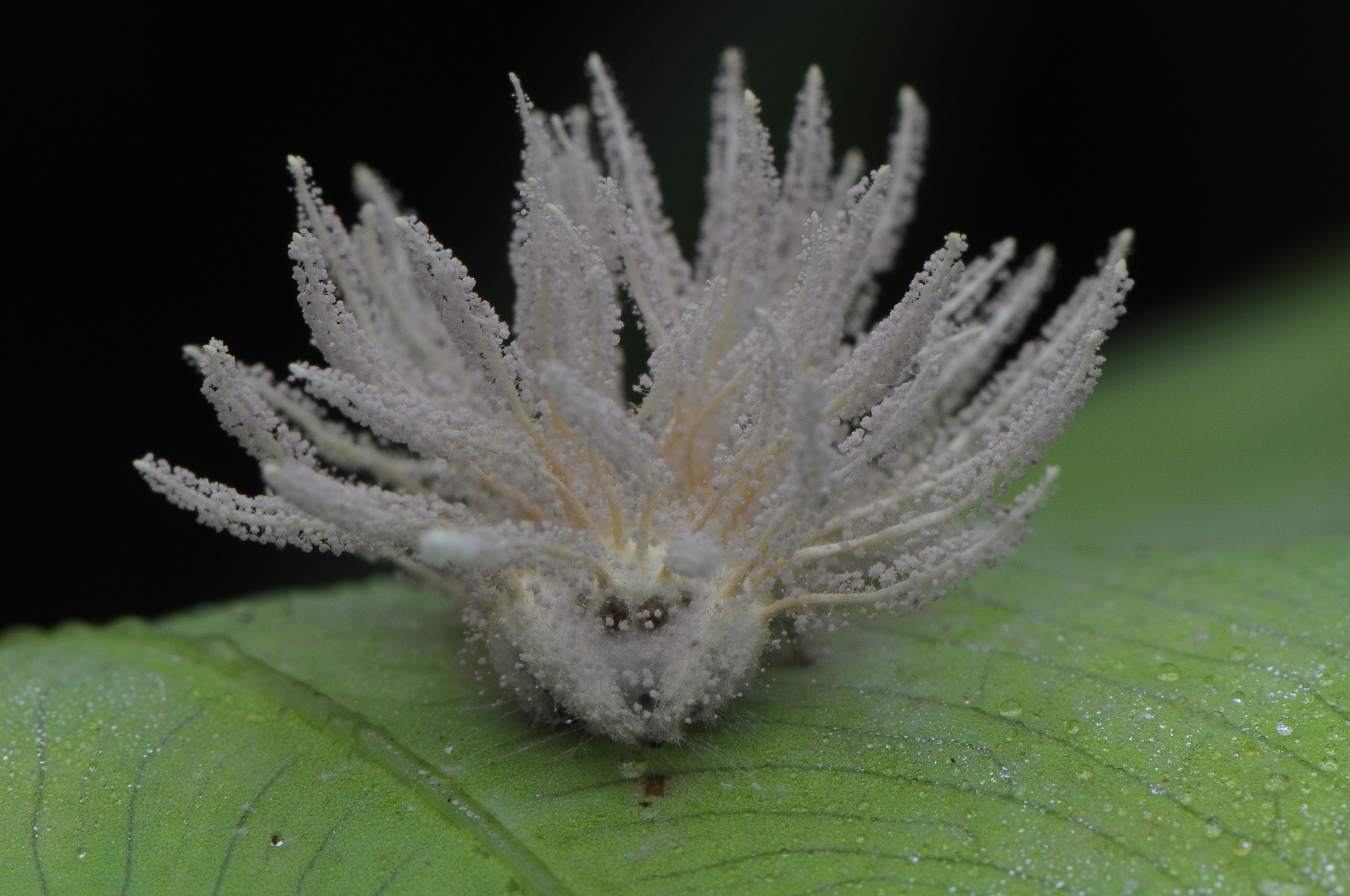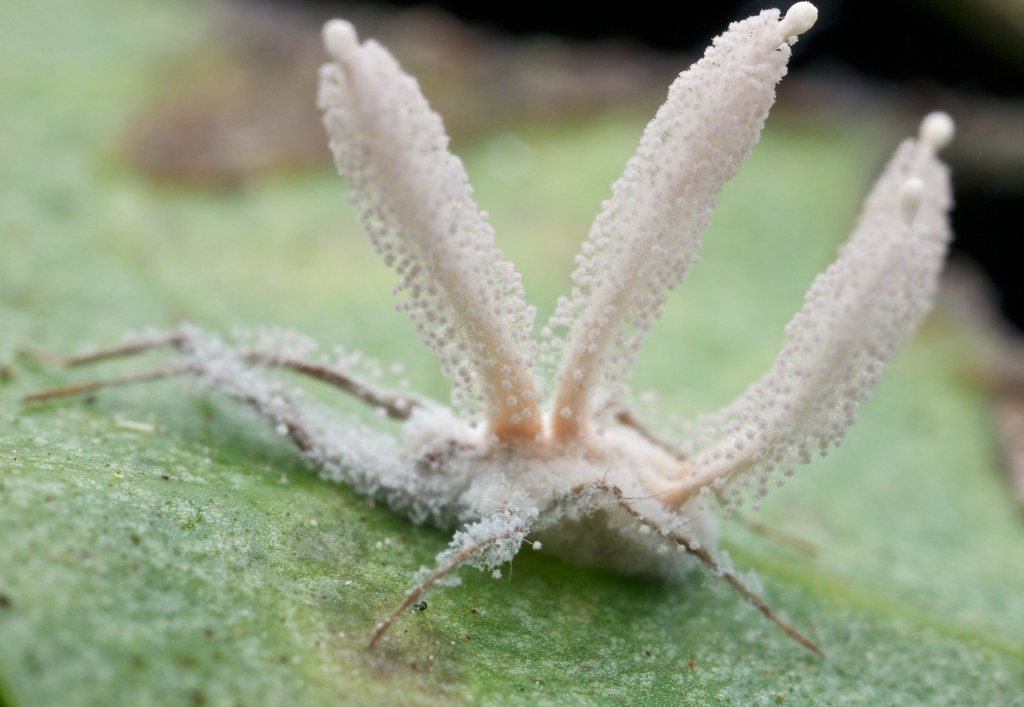The spider fungus, invades the spider. Taking over its bodily functions. Causes the spider to invade a hermit crab/spider shell and bite the hermit within. The hermit then burrows into the sand, and the spider binds itself to the hermit with its web. They then enter into a hibernation period. Following the hibernation period, the fungus has engulfed the creatures, whilst retaining certain aspects from both. The fungus then continues to grow from the shell, creating shell-like spines which contain the venom from the spider within them. Now it is able to be in and out of water, the Spungel has the ability to hunt for its next victim in all terrains.
- Red algae could link to blood like aspect (like flamingos turning pink)
- Sea snails and spiders are the hosts
- Science lab scene?
- Rats with mushrooms coming from their heads – experiments
- Similar to weaver fish spines, if a human stepped on this shell, they can become infected
- Shell creates a perfect chasm for releasing spores
- Even if not stepped on, if lifted up to look or listen to, the shell will release spores
- Has the advantage of both venom and spore transition
Fossils: fossils found in the hibernation stages etc, buried into the sand/rock
https://www.fandom.com/articles/the-real-world-parasite-behind-the-last-of-us
https://blogs.scientificamerican.com/but-not-simpler/the-fungus-that-reduced-humanity-to-the-last-of-us/#:~:text=The%20new%2C%20unidentified%20species%20of,is%20the%20un%2Ddeath%20sentence.







